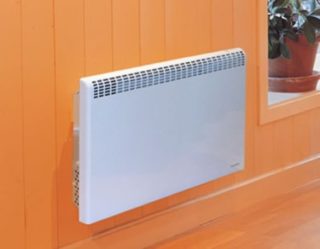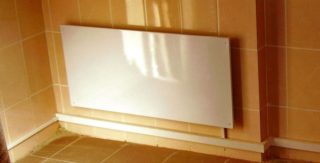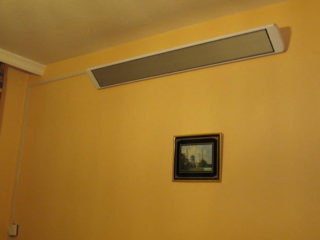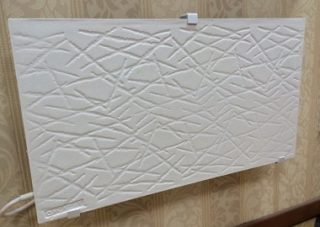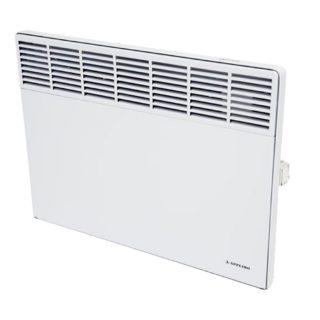Heating problems are quite common in most cities of the Russian Federation. This includes the untimely inclusion of communications in the cold months, lack of capacity, improper placement of equipment. In addition, many country houses and cottages are often not connected to the central heating system at all. Energy-saving heaters are a category of modern devices operating from a 220 V network and providing efficient heating with minimal electricity. Such equipment combines an economical mode of operation with reliability. It is used mainly as an auxiliary heat source, but can also be used as a main heater.
Varieties of wall-mounted energy-saving heaters
Devices differ in a number of criteria, classification is possible according to the principle of operation, type of execution, materials, and other factors. They need to be paid attention to when choosing an energy-efficient heater.
By heating method
According to the type of work, two types of devices are distinguished - convection and infrared. In the first case, the model warms up the air flow passing through the structure, in the second the equipment generates thermal radiation, which heats objects in the room. Infrared energy-saving batteries are distinguished by the fact that the air is heated from the lower layers during the operation of the devices.
In the case of convectors, the air flows from below are heated most slowly. For this reason, infrared equipment is more in demand, it is considered more efficient and faster. The disadvantage is the high price. Convector units are fan and oil, infrared operate primarily on electricity.
According to the method of power control
Modern models are usually equipped with a thermostat. This element may have a button design, a touch screen or a lever, the rotation of which allows you to set the desired temperature. When the air in the room warms up to the required values, electric energy-saving heating convectors work with reduced power. Infrared models are usually more popular, because their mechanism for changing thermal indicators is more modern than that of convection counterparts.
By type of heating element and design
Most often, such equipment is equipped with the following types of heaters:
- Tubular. These types of heating elements are characterized by increased reliability, long life, and practicality.
- Panel. Such elements are more compact, combine efficiency with a stylish look.
- Film. They have the finest structure, high efficiency, but are not cheap.
Structurally, heaters for home are energy-efficient wall and floor. As a rule, the first variety is more compact, these devices are bought by owners of small-sized apartments. Devices of the second type take up more space, but they are more powerful, have increased performance.
According to the material of manufacture, heaters with ceramics, a bimetallic, aluminum surface are distinguished.
Types of wall heaters
Structurally, wall-mounted energy-saving electric heating radiators are divided into three types. Classification features should be considered in more detail.
Infrared
This is the most common group of models, the heating component is made of carbon fiber, it provides heating of air masses through exposure to thermal radiation. Such models are characterized by maximum compactness, high energy consumption, are available in a large number of options. For example, in modern apartments, energy-saving ceramic heaters with a power of more than 1000 watts are increasingly being used. Usually they are equipped with a built-in thermostat, equipped with an inverter motor that is resistant to wear and ensures smooth operation of the device. On sale you can also find low-power models, usually they do not have a thermostat. It is important to consider that when using such equipment it is required to purchase a protective screen.
Quartz
The design of these models is a flat plate of quartz sand, inside of which are spiral-shaped heating elements made of metal. The surface of the panel gives off heat to the atmosphere, effectively warming the room. For the panel part to warm up properly, 20 minutes of operation of the device are sufficient. Despite the long preparation, quartz heaters are good in that they keep the temperature for a long time after turning off.
The maximum coating can heat up to 95 degrees Celsius, so when installing it is also required to mount a protective screen so that households and pets do not get burned. During operation, quartz models almost do not dry the air. They are great for apartments and cottages in which people live constantly.
Electric
These are relatively simple in design devices that consist of a convection chamber and a heating component. The camera at the same time acts as a protective case, with air vents located on the side parts. The casing of such models heats up to a maximum of 60 degrees, so the risk of injury is minimal, and there is no need to put an additional screen during installation.
Advantages and disadvantages
The advantages of wall heaters, regardless of the type of heating and other factors include the following properties:
- Compactness. These models are lightweight, modest in size, easily placed on brackets on any wall.
- Energy saving. The new generation heating panels with a thermostat consume a minimum of electricity, which allows the use of equipment for heating during permanent residence.
- Simple installation. The installation does not require specific knowledge, you can cope with this yourself.
- Stylish look. Modern heaters disguised as murals or paintings look especially interesting.
- A variety of designs that differ in efficiency, ease of management, price and other factors.
- Safety. Most models are equipped with special screens or installed at a height that does not allow a burn.
The disadvantages include the overpriced equipment, the complexity of the repair and the need for specific maintenance. However, even energy-saving ceramic home heaters are readily available to most buyers, especially when compared to alternative heat sources. Taking into account the energy-efficient design, the installation of equipment will reduce the cost of utility bills in winter to the maximum.
Selection and operation of energy-saving wall heaters
When selecting devices, you need to pay attention to the following points:
- The maximum area that the device can heat.
- DestinationFor example, for local heating of a separate area in the house, you can buy an infrared heater, and for heating the whole room it is better to stop on a convection oil model.
- Intensity of operation.
- The presence of a built-in thermostat or the ability to connect it as additional equipment.
When installing, it is important to comply with the distance requirements: from equipment to furniture, household appliances and textiles should be at least 50 cm. Do not throw the heater in the on state without supervision, so as not to cause a fire. Before switching on, you need to check whether the power outlet is working. In addition, during the application it is impossible to close the ventilation ducts of the device, use it to dry clothes, put objects on the case. These requirements are due to fire safety.
